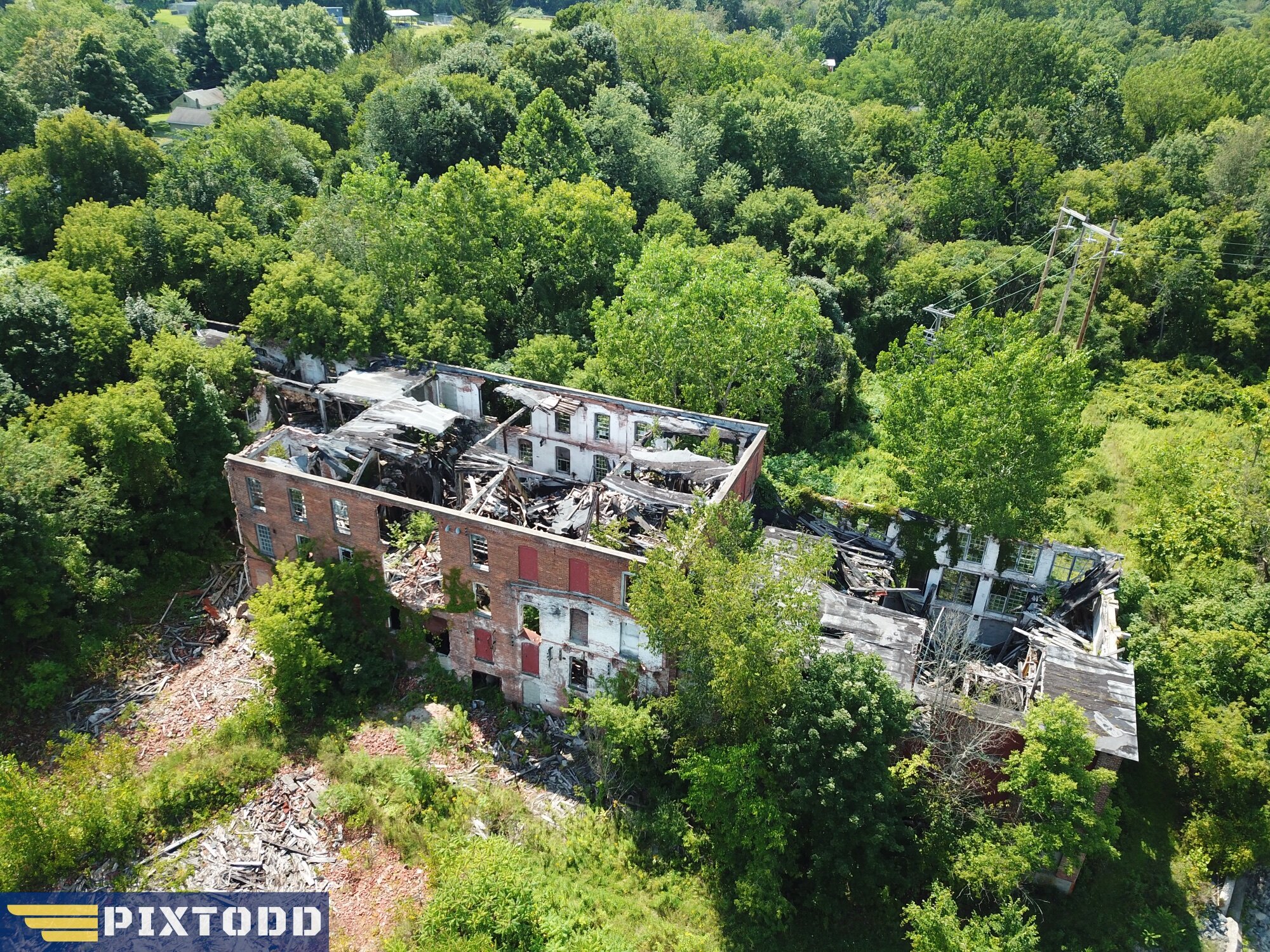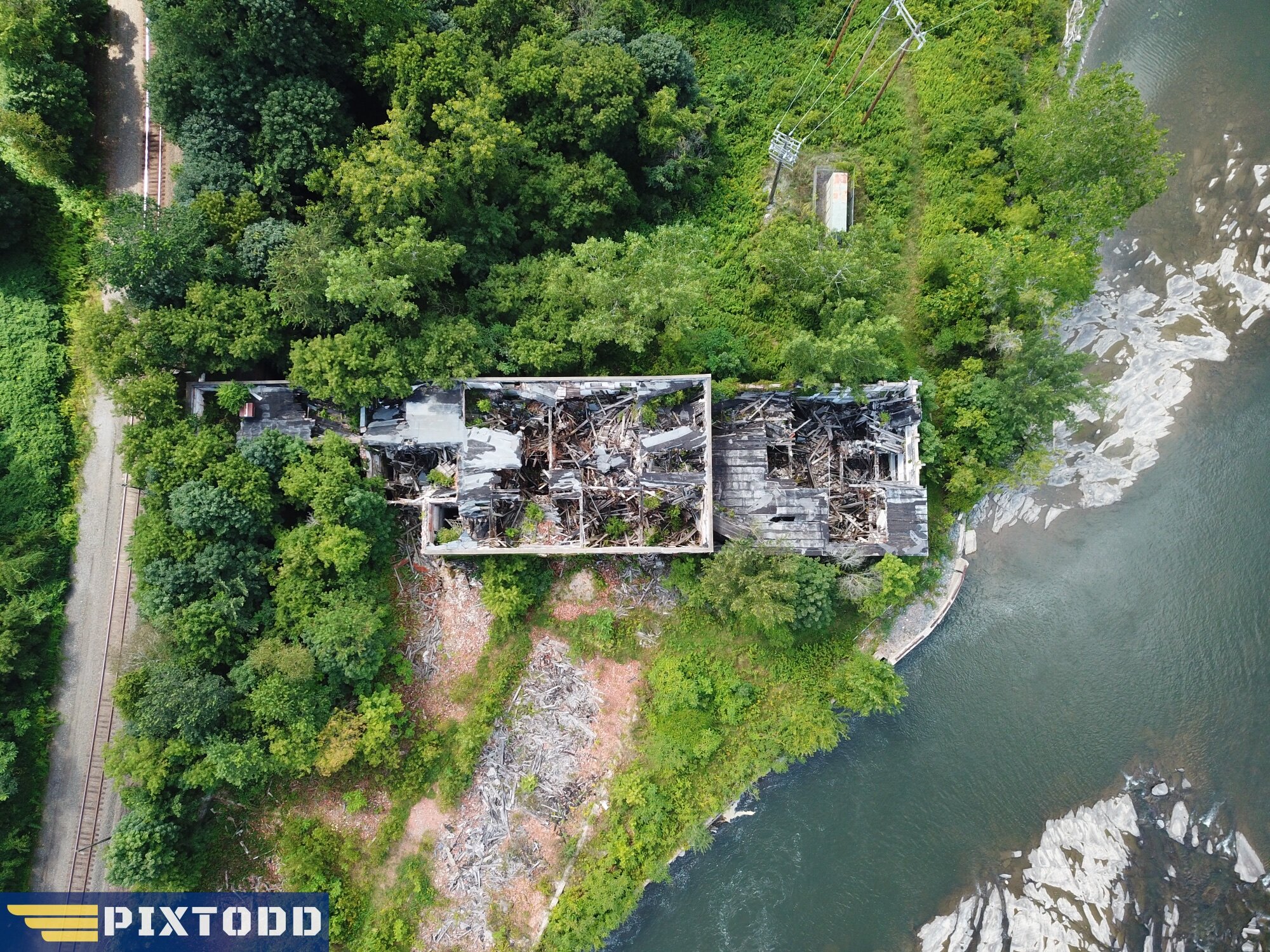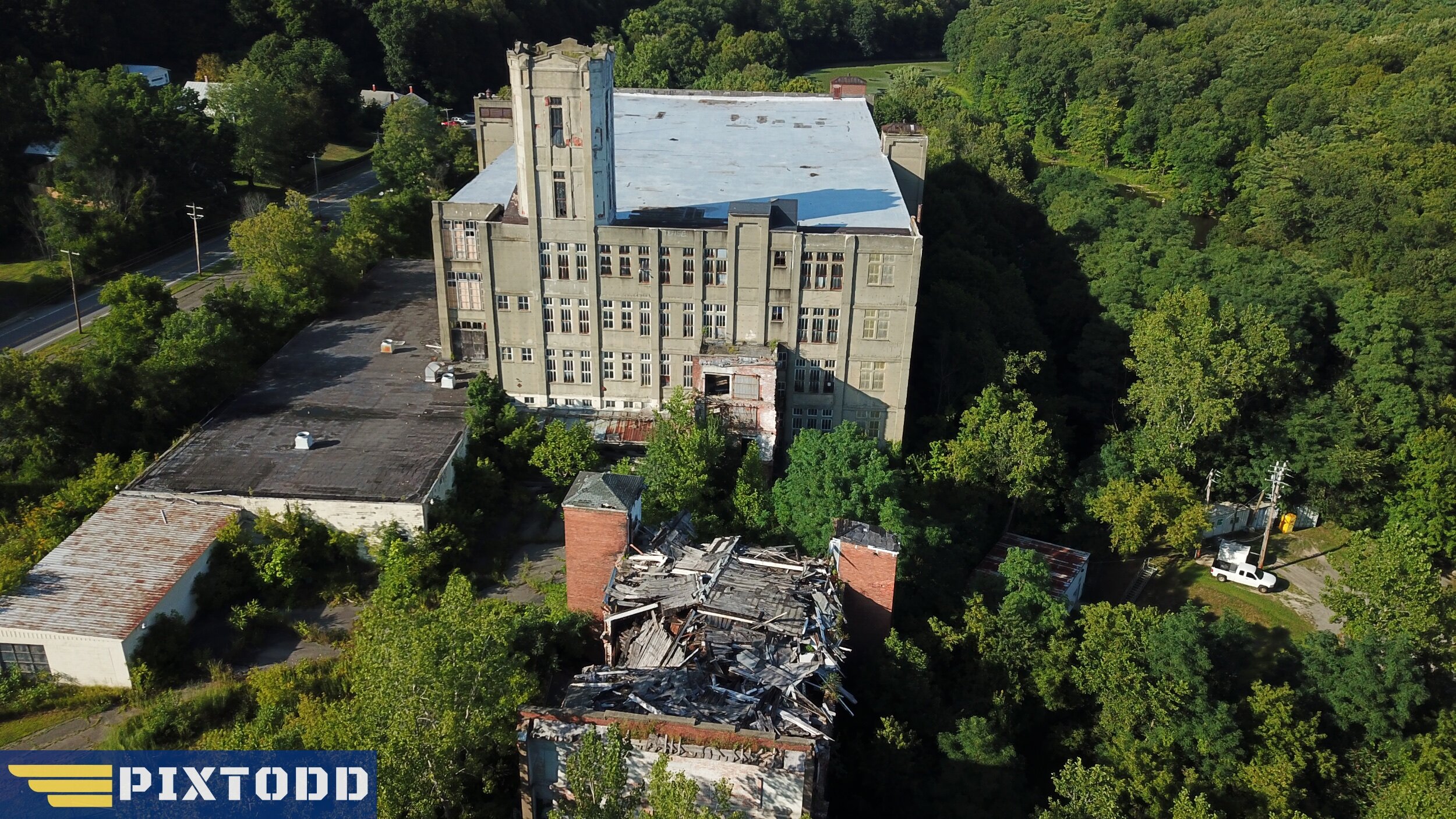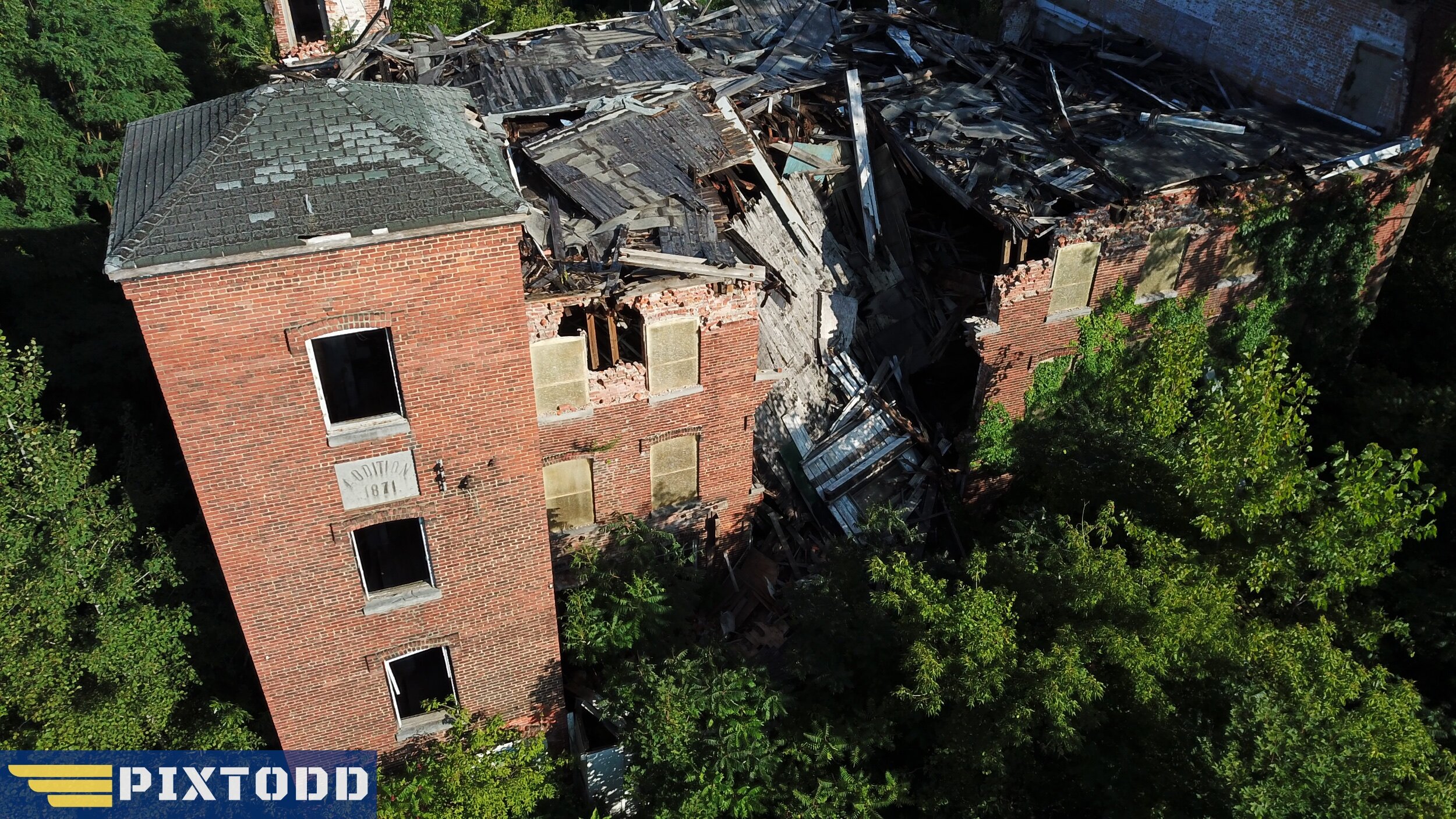Empire Mill
In 1862, Paper Bag King George West established his Empire Mill in Rock City Falls...
In 1862, Paper Bag King George West established his Empire Mill in Rock City Falls, a hamlet in the town of Milton, Saratoga County, New York. Across the street from the mill is The Mansion Inn of Saratoga. It was originally built as a 23-room Venetian, villa-style estate in 1866 and is recognized by The National Register of Historic Places.



There were saw and grist-mills in the upper part of Rock City before 1800, usually known then as the Hatch mills, though owned by Swan. This was the first use of the splendid water-power at that point. Not much later than that, however, another one was erected by Rathbone, the first settler at the hamlet of Rock City. There were two brothers Rathbone, one the pioneer merchant and landlord, the other the mill-owner. One of them afterwards removed to Greenfield.
Thompson Textile Mill
In 1871, Industrialist James Thompson built a textile mill in the village. Nearly all village residents worked in the mill and school kids ran home when the mill's lunch whistle sounded. (From wikipedia.org)
In the late 1800’s, Industrialist James Thompson built a textile mill along the Hoosic River in Valley Falls, New York. Nearly all village residents worked in the mill and school kids ran home when the mill's lunch whistle sounded. The mill provided fabrics to hat makers in the northeast. The company soon added finished products including twine and netting. In the 1950s, the mill catered to home sewing enthusiasts.
The Thompson firm opened a new mill in Delaware in the 1970s and another factory in Mexico in the 1990s. Cotton grown in the South was shipped to Mills here for processing into fabrics.
Valley Falls is a small town north of Albany and was considered the ideal location for Thompson to build his mill. The first mill was completely “vertical”, from spinning of yarns to weaving and finishing. Thompson concentrated on 3 main products: Buckram, Netting and Twine. The #1 fabric at the time was Buckram, as the fashion and social mores of that era dictated that everyone, men and women, wore a hat.
After its height of operation in the 1970s it entered a decade of decline. The mill had been vacant for at least 10 years when it went up in flames in the early morning hours on April 22, 2009.



Victory Mills Textile Building
Victory Mills is a historic textile mill building located at Victory in Saratoga County, New York.
The historic textile mill building located in Victory Mills (Saratoga County, New York) It was built in 1918 by the American Manufacturing Company and is a rectangular, five story brick, reinforced concrete building measuring 282 feet by 157 feet.



It has about 220,000 square feet of space and featured six tower structures, five for stairs and one holding a water tower. It operated as a cotton mill until 1929, when operations moved to Guntersville, Alabama. In 1937, it was purchased by the United Board and Carton Corporation, later A.L. Garber / Wheelabrator-Frye, then Clevepak Corporation / Victory Specialty Packaging Company who manufactured folding cartons. (Source wikipedia.org)






